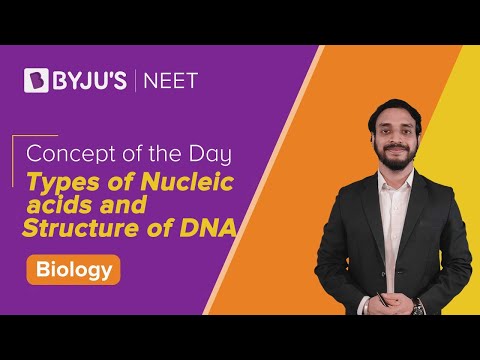R. D. Kornberg proposed the nucleosome model of basic chromatin material in 1974. Later in 1975, P. Oudet coined the term nucleosome. A eukaryotic chromosome’s structural unit called a nucleosome is composed of DNA coiled around a core of proteins called histones. Here, let’s discuss the nucleosome model in detail.
Table of Contents
What is a Nucleosome?
The nucleus of a cell houses the genes, which are the hereditary units. Genes are found on chromosomes, which form a network of chromatin in a non-dividing cell. Chemically, chromatin consists of a single DNA molecule, an equal number of 5 basic types of histones, some RNA molecules, and a variable amount of various acidic proteins. In fact, nucleosomes serve as chromatin’s basic structural unit.
DNA is firmly bound to an equal mass of histone proteins in eukaryotes, forming a repeating arrangement of DNA-protein particles known as nucleosomes. The double-helix DNA in each human chromosome would extend the cell nucleus thousands of times if it is stretched out. Histones are essential for the orderly packing of this very long DNA molecule.

Also Explore: Chromosome Structure
Nucleosome Model
The nucleosome model proposed by R.D. Kornberg in 1974 is the most significant one that explains the structure of nucleosomes. This model was confirmed and named by P. Oudet in 1975. According to this nucleosome model, the histone particle is wrapped with DNA around it.
How did scientists come to know the interaction between DNA and histones in chromatin?
The chromatin extracted from a cell was first treated with the general nuclease enzyme. Following nuclease digestion, the chromatin sample is separated on an agarose gel. They discovered that DNA forms many fragments of approximately 200 base pairs or multiples of 200 bps on the agarose gel. When non-protein-associated DNA was treated with the same nuclease enzyme, the fragments formed were randomly sized. This suggests that DNA is protected from the nuclease enzyme at specific points along its entire length. Later, it was proposed that proteins (histones) interacting with DNA in chromatin provide this type of protection. Based on these findings, Kornberg proposed the nucleosome model of chromatin organisation.
Nucleosome Model of Chromosome
- A chromosome molecule contains many nucleosomes that are repeated. Each nucleosome is made up of 1.65 loops of DNA wrapped around 8 histone proteins. A nucleosome’s wrapped DNA molecule contains approximately 146 base pairs.
- The nucleosome contains two copies of each of the four nucleosome histones – H2A, H2B, H4 and H3. Histone octamers are the collective name for the eight histones.
- Histones proteins are positively charged molecules that can form stronger bonds with negatively charged DNA molecules.
- The DNA that wraps around the histone structure is known as the core or wrapping DNA.
- Each nucleosome is a disc-shaped particle with a height of about 5.7 nm and a diameter of about 11 nm.
- These repeated bead-like structures are linked by a linker DNA molecule, which typically consists of 54 base pairs and an H1 histone protein. As a result, the H1 histone binds to the location where DNA exits and enters the nucleosome. The H1 histone does not belong to the histone octamer group.
- The nucleosomes repeat at approximately 200 base pairs or nucleotide intervals on average.
Significance
Each diploid human cell with 6.4 x 109 DNA base pairs has 30 million nucleosomes (3 x 107 nucleosomes). It is a known fact that a nucleosome is made up of histone proteins that the DNA wraps itself around. These nucleosomes are then folded repeatedly to form the chromosomes which provide the basic genetic characteristics of humans. As a result, the primary function of nucleosomes is to ensure that long stretches of DNA can fit properly inside the cell and form the basic unit of life.
This was a brief note on the nucleosome model. For more NEET related content, visit BYJU’S.
See more:
Recommended Video:

Comments